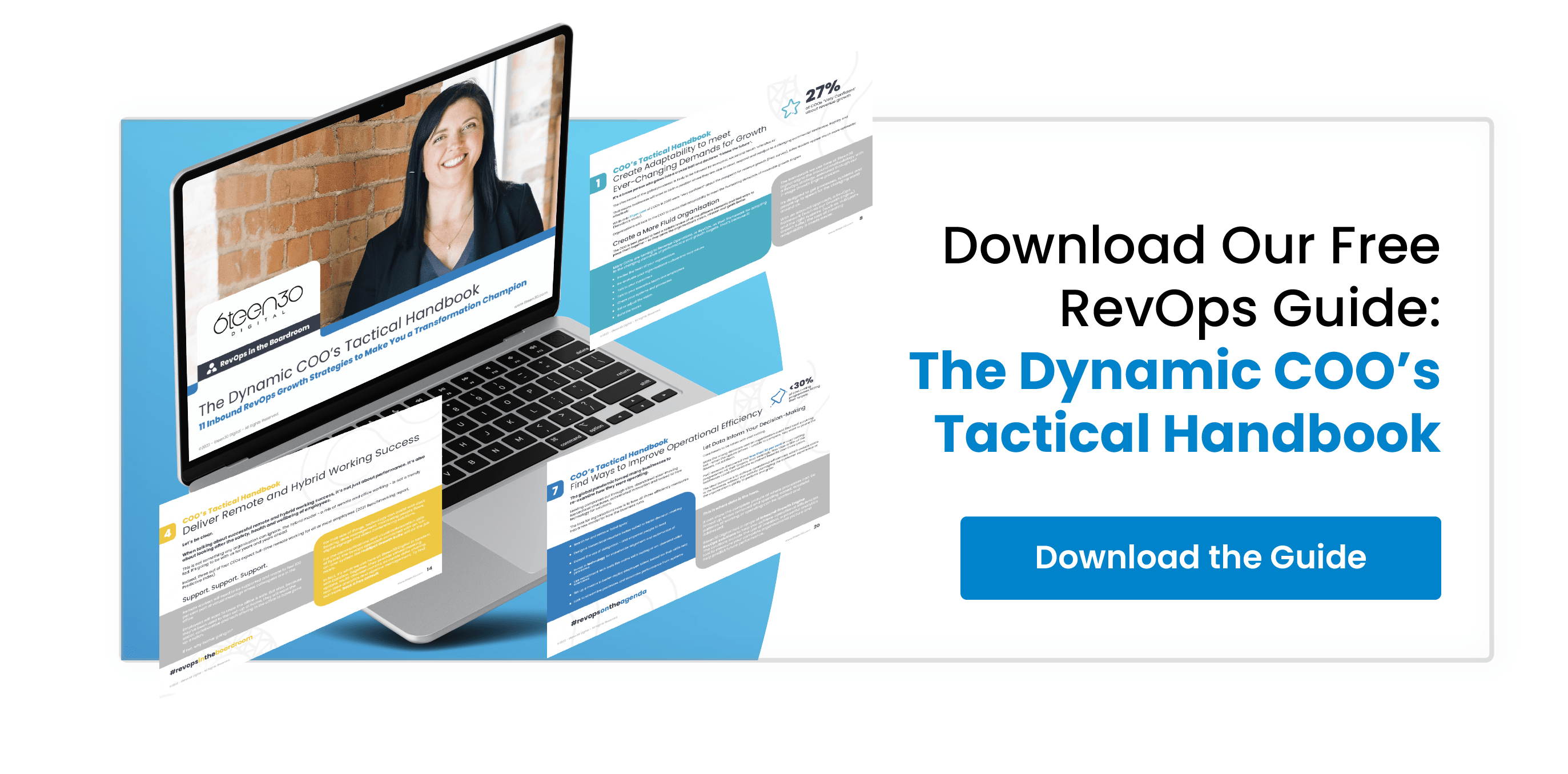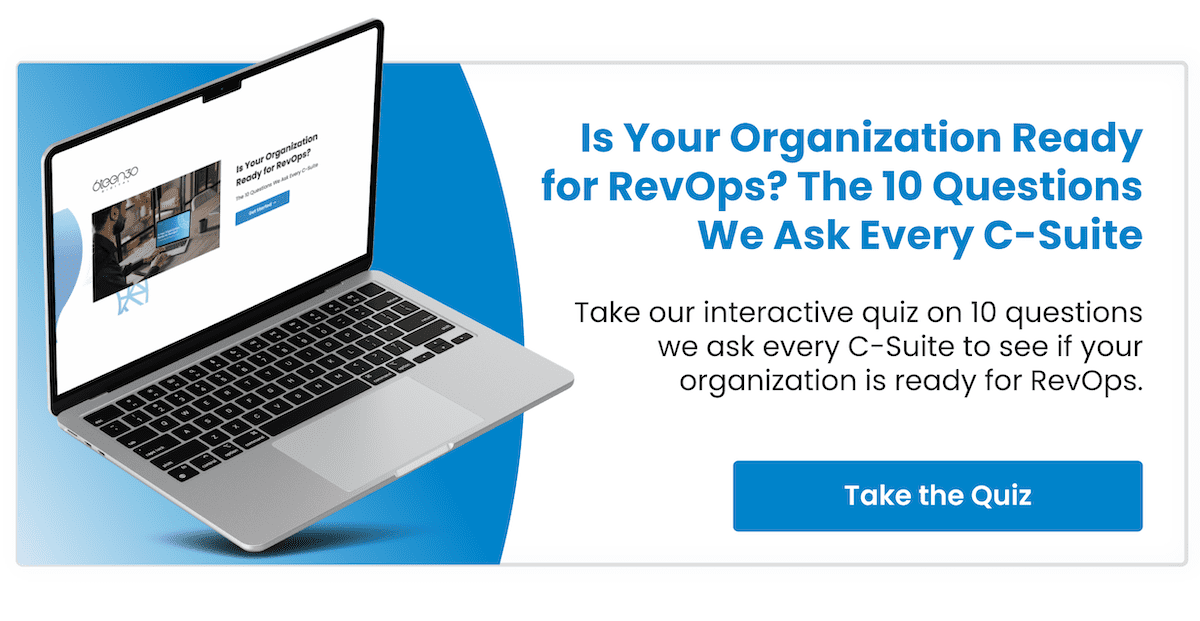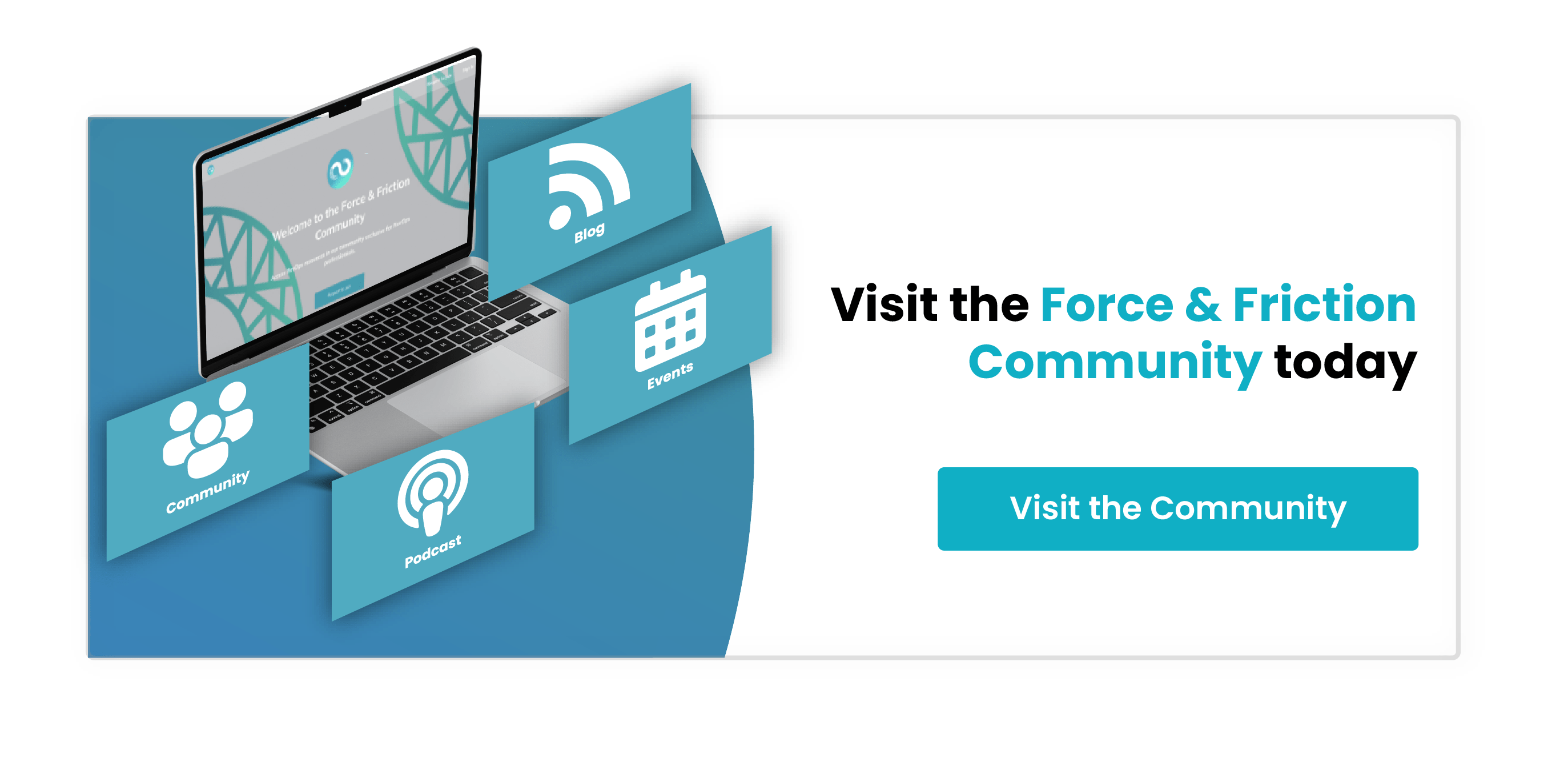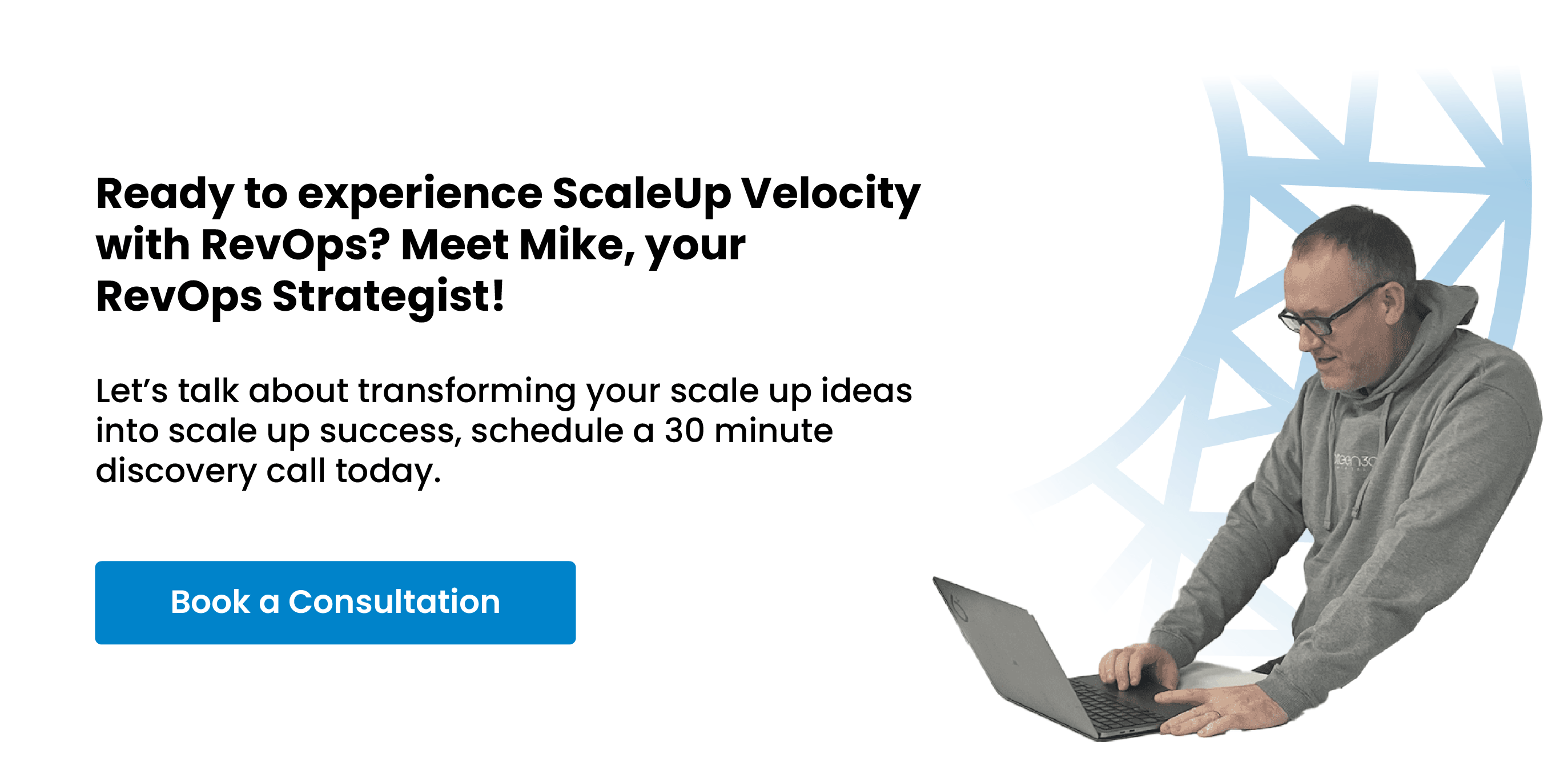
The unprecedented events of 2020 have left their scars on the world.
The business sector has experienced job losses, a huge remote working ‘experiment’, supply chain and distribution disruption, health and safety adjustments, and more.
Organisations look to the COO to get things done and ‘make it happen’... and usually ‘by yesterday’.
The expectation is that it will all be organised, adapted and transformed according to the big plan (before the plan gets changed again, of course). That leaves the Chief Operating Officer and those in a supporting role with some serious head-scratching to do.
Here are 11 mission-critical challenges facing the dynamic, growth-conscious COO - and a pathway for meeting them.
1: Adapting to the Ever-changing Demands of Growth Targets
In a downturn or volatile economy, the best laid strategies may not always work out as planned.
Sales overpromise. Marketing jumps on the latest bandwagon trend but loses the strength and consistency of brand message. Customer service delivers below standard and it’s starting to show in complaints and churn.
COOs are often placed at the head of the blame queue when things go wrong yet also the people organisations turn to first for change, to implement a turnaround or deploy a fresh direction on growth.
It’s as if they are expected to wave a magic wand, clean up the mess and turn a Ford into a Ferrari.
Mixed Levels of Optimism
According to a PwC survey last year, only one in four CEOs was “very confident” about revenue growth prospects. However, Salesforce research revealed sales leaders were much more optimistic.
There may well be C-suite debates now or very soon about where to aim next on high-level growth goals.
How much revenue does your organisation expect? How many employees (if any) will you hire? How many customers do you want to attract?
The dynamic COO will be expected to think on their feet and respond to the ever-changing demands of growth targets.
The strategic response is to review and get the best out teams, systems, processes, technology and employees.
2: Building Operational Capacity and Flexibility
The retail industry gives us many illustrations of the maxim that business can be about ‘the survival of the fittest’.
Some companies, including big brand names, have fallen victim to the pandemic. Resilience appears to be not just an attitude but about being able to adapt to changes in the marketplace and competitive landscape.
Agility means creating flexibility. The ability to flex requires operational capacity that can deal with the here and now yet also be ready to shift gears when required.
Capacity-building puts a focus on leadership, organisational infrastructure and employee skills and development.
Preparing for the Challenges Ahead
The C-suite must be ready to review, reaffirm or refresh the values, mission and culture of the organisation - and provide the strategic direction for resilience and growth.
The COO can expect to be charged with building operational capacity. This covers workplaces, facilities, computers, equipment, digital technology and systems for payroll and accounting.
The organisation will need to explore and implement automation, and ensure it has both the skills and numbers in its workforce to carry through on its financial goals.
It could mean redeployment of employees, hiring new people, retraining or outsourcing. It might mean creating so-called ‘super teams’ to focus on specific, mission-critical projects rather than sticking to rigid structures.
3: Delivering Transformation to Budget
Whilst the COO plays a strategic role as part of the C-suite, they are typically regarded as the ‘doer’ who makes sure what’s been decided gets done.
When change is on the agenda, he or she takes the lead on transformation. They are constantly being asked by their peers, “Can it be done?”
The push is going to be on during 2021 and 2022 to recover or accelerate growth. Some companies want to get back to ‘business as usual’ as best they can; others have thrived and want to take advantage of that success to take it all up another level.
Facing the Conundrum
The hard-pressed COO is going to have to solve a familiar conundrum.
How does the organisation balance achieving higher performance and keeping within budgets?
The COO might be asked to make significant improvements, find shortcuts which manage to maintain or raise standards, and get creative with processes and systems to squeeze more out of the ‘engine’ - just like chief engineer Scotty in the TV series Star Trek.
The solutions are going to be found in a mix of data, automation, systems and people.
4: Making Hybrid Work for Everyone
The smart money seems to be betting on remote working and hybrid working being here to stay.
Surveys appear to back that viewpoint.
In its 2021 Benchmarking report, Predictive Index revealed three out of four CEOs expect full-time remote working for all or most employees. Cisco research suggests 98 per cent of future meetings will have one or more remote participants.
One side of the challenge will be about what office space to keep, how to safely use or restructure areas and rooms for hybrid meetings, and how to make the building more of a social and cultural hub of the organisation.
The other side of the challenge is about how to maintain effective communication and collaboration when people are spread far and wide - and how to support employees with their health and wellbeing.
A Shift in Focus
In 2020, the emphasis was all about responding to the pandemic and enabling employees to work remotely, securely and safely. It all happened in a bit of a whirlwind.
From now, the challenge is to make the hybrid model work - both in terms of performance and staff wellbeing.
Whilst some employees have found the remote experience more productive, flexible and enjoyable than the office commute, let’s not forget it’s been a tough time for everyone.
The drive for efficiency must be matched with empathy, health and wellbeing monitoring, and the resources to support people to do (and feel) their very best.
5: Retaining Customers in a ‘loyalty-free’ World
If they didn’t acknowledge it before, they do now. People will buy from anywhere they choose.
Research by NewVoiceMedia revealed two out of three customers change vendor or supplier because they no longer feel valued. Businesses lost business not on price but because their relationship with the customer went sour.
People will still follow and attach themselves to brands that they admire - and feel a connection with - but the moment you disappoint they will throw loyalty in the skip.
The Process of Personalisation
Today, it is customers and clients who lead the buying process. They do their research, ask questions and buy when they are ready.
The COO can make the strategic case for a consistent personalised approach. Marketing, Sales and Customer Service need to understand people expect value at every stage of their buying journey.
The COO can also put in place the operational resources to make that task easier for all teams. The personalised approach, clear processes, automated systems and resources for responsive communications all play their part in helping organisations to attract, engage and delight customers.
6: Aligning Stakeholders
When the buck always seems to stop at your door, it can lead to frustration or resentment.
The dynamic COO plays the smart game by finding solutions which not only deliver for the organisation but also share out more of the responsibility.
Are you being asked for higher performance? For better results for the same money? For a way to get sales up and churn down?
If so, one way forward is to align the stakeholders. Have everyone singing from the same hymn sheet - and working together towards clearly defined revenue goals. The numbers look promising.
A 2019 study by SiriusDecisions revealed companies that used an aligned approach to revenue growth were 19 per cent faster and 15 per cent more profitable.
Have the Conversations
One of the challenges will be to have better and more open conversations with peers and colleagues.
Get the C-suite on board and it makes the COO role easier. Alignment would pull together marketing, sales and customer service - all with a responsibility for revenue.
Talk with Finance about how replacing a multitude of systems with an ‘all in one’ solution works with the numbers. See what HR can do around training so employees know how to use the technology effectively.
Alignment leads to improved communications and collaboration. This helps to shorten the sales cycle, give the customer a better experience and drive performance across the organisation.
When you streamline processes and have access to improved data-sharing, it results in bigger efficiency, productivity and space for innovative approaches.
7: Improving Operational Efficiency
Whether it is improved performance, greater resilience or more flexibility the organisation wants - agility is the key.
To be more agile, a company needs to improve its operational efficiency. That boils down to improving processes, people and platforms (or systems).
Some of this may already have taken place, as a response to the pandemic, but now it’s time to set something up to last the distance, ready to scale as you grow.
Share Out the ‘To Do’ List
There are many aspects of the organisation which can be looked at for inefficiencies and improvements.
-
Know your operation and evaluate for weak spots or ‘blind spots’
-
Examine hierarchical structures to see if they can be flattened
-
Review training on systems and processes so people are up to speed
-
Develop and keep your best employees for high productivity and performance
-
Review processes and see where they can be streamlined and automated
-
Explore ways to improve customer service and retention
-
Remove barriers to success
-
Raise the bar. Motivate and offer incentives to perform consistently well
-
Measure your organisation up against its peers - how well does it come out?
-
Carry out a technology review and explore what the latest can offer you
This is not a one-person exercise. It needs to involve the whole organisation and for leaders to bring it all together.
8: Implementing Digital Transformation
Underpinning all the challenges is how to get technology to make life for your organisation easier.
Employees use the software and platforms their team provides. Teams within an organisation often use different systems. That does not make for great collaboration, accurate data or an agile response to customers.
No surprise that, according to Gartner, 69 per cent of board leaders expect to accelerate digital transformation.
The COO will be expected to play his or part in delivering advances in team communications, employee skill sets, the speed and quality of response to customers, and automation.
Serving the Customer, Supporting
Your Teams
Digital transformation aligns CRM and other systems so every team member can see one picture of truth, in real time.
It gives your people the correct resources and reliable data to help attract, engage and delight the customer. From chatbots and knowledge bases to PDFs and explainer videos. From sales demos to satisfaction surveys. From FAQs to smooth onboarding.
It can help your organisation win more customers and keep them happy. It can also drive employee recruitment, efficiency, productivity and retention.
According to Finances Online, online collaboration tools improve productivity by up to 30 per cent.
When you have real-time data shared across teams, tracking and analytics to drive decision-making, and people focused on customers rather than frustrations with outdated technology... the success meter is only likely to swing one way.
9: Keeping the Team in Good Shape for Growth
For many organisations, the past year or so has been about survival and firefighting.
COOs and other HR leaders have had to contend with remote working, supporting anxious and stressed employees, workforce restructuring and (for some) carrying out redundancies.
As the focus turns to improving performance and growth, one part of the challenge is having the right people in place. Another is keeping them motivated and well. Good communications, collaboration and resources are part of making that happen.
These Statistics Offer Some Pointers
Research and surveys offer both insights and guide points for the way forward. Here are some (courtesy of Gallup, Finances Online, Bit, Troop Messenger and Atlassian) to reflect on:
-
Diverse teams perform better than uniform teams by up to 35 per cent
-
Online collaboration tools increase productivity by 30 per cent
-
One in three HR professionals say poor team collaboration lowers morale
-
One in four employees leave an organisation because they feel disconnected
-
Effective communication leads to 4.5 times higher retention of talent
-
Recognising teams’ work and achievements increases profits by 29 per cent
COOs understand as well as anyone the value of good employees, with the right attitude and skills. Raising performance and achieving growth requires teams to be in good shape. Some big conversations may be needed with HR.
10: Recruiting and On-boarding the Remote Way
It’s not just working which has gone remote during the past year or so.
The traditional interview process has found itself substituted by virtual recruitment.
No travelling to the appointment. No handshakes or face-to-face questions from a panel. No personal, guided tour of the office or building.
Everything done via digital communication and conversations on a screen.
The Way of the Future
A Gartner survey in 2020 revealed that 86 per cent of organisations were using virtual technology to interview candidates during the pandemic.
Many HR experts believe this remote approach is likely to continue - and should be expanded to include onboarding.
Organisations may have to re-think how they conduct interviews, vet and test candidates, and support new hires to hit the ground running. Considerations include:
-
How best to advertise roles externally
-
Leveraging technology (e.g. AR, or augmented reality) and gamification
-
Clarity and accuracy of communications at all stages of the process
-
Automation of onboarding and online courses for initial training
-
Virtual face-to-face introductions, tours and walk-throughs
Every organisation will have its own workforce situation. Some may have a temporary freeze on external recruitment. Some may be encouraging internal promotion. Others are gearing up for ‘business as usual’. Whatever the case, HR leaders need to think remote.
11: Being More Strategic Whilst Juggling Operations
The COO is used to being the one responsible for ‘making it happen’ on the execution and delivery side of strategy.
It may feel at times as if he or she is the first person to receive the finger of blame when things don’t go according to plan.
Not always fairly, either.
Making operations smoother, more efficient and increasingly automated can ease the burden. It’s why digital transformation, alignment of stakeholders and helping teams collaborate more effectively are suggested strategies.
Using People and Processes for Profitability
The COO can also look at the HR function to play a more strategic role within the organisation. Come up with ideas that support the big-picture mission, yet also make implementation easier, and they’re more likely to be backed.
According to Personio research, 71 per cent of managers believe HR added a strategic value to the business during the pandemic. There’s every reason to believe that kind of endorsement will continue in the years ahead.
Taking advantage of technology, better data and implementing more automated HR processes, is a route to improved performance delivery.
That frees up time to focus on people strategy, recruiting the best and ensuring employees are supported to help the organisation be a standout success.
Companies may also explore ways to provide more cost-efficient and tax-efficient benefits packages - improving profitability while keeping people rewarded well.
Revenue Operations - The Rising Star
Faced with these significant challenges, it’s no surprise to find COOs turning to Revenue Operations, also known as RevOps or RO.
This approach aligns sales, marketing and customer service operations across the complete customer life cycle to drive growth.
Shared data means teams can work together better, smarter and do their jobs more smoothly. Synchronised activity increases operational efficiency. Better understanding of prospects and customers means it is easier to deliver value, quality and the wow factor. The tech side makes automation and change much simpler.
RevOps has been described as building the tracks and keeping the trains running on time.
The biggest challenges to implementation are typically company resources, inconsistent data and disconnected systems. It’s why organisations often reach for outside support to make it all happen.
Here at 6teen30 Digital, we use Revenue Operations to help clients align their marketing, sales and customer service teams. Our strategic GamePlan Workshop process combined with the HubSpot Growth Suite delivers a customised RevOps solution.
Statistics suggest the investment is worth exploring.
HubSpot research says companies with aligned departments close 38 per cent more deals and post 208 per cent more marketing revenue. A study by SiriusDecisions found public companies using RevOps saw 71 per cent higher stock performance.
If RO is delivering ROI in those kinds of numbers, it’s little wonder more and more COOs and C-suites are exploring its possibilities.
To explore RevOps solutions from 6teen30 Digital, you can view our RevOps Journey path.
Turning Challenges into Opportunities
Today’s dynamic and growth-minded COO is under more pressure than ever.
The everyday challenges are stacked with those created by the global pandemic and its impact on the economy: balancing operations, strategic transformation and ‘fixing everything’
As uncertainty lingers, companies can expect more change in the years ahead.
Key challenges revolve around strategic direction for growth, creating a strong organisational culture, enabling people, ending silo mentality and getting teams working better together.
The focus is turning to customer-centric activity, gaining a deeper understanding of customers, improving collaborative systems, and finding accurate and reliable data to drive decisions for performance and growth.
To discover more about how to use inbound strategies for successful RevOps growth, 6teen30 Digital has produced a free guide, called The Dynamic COO’s Tactical Handbook.








%20-%20Teal.png?width=500&height=130&name=Force%20%26%20Friction%20-%20Branding%20-%20Logo%20(White)%20-%20Teal.png)